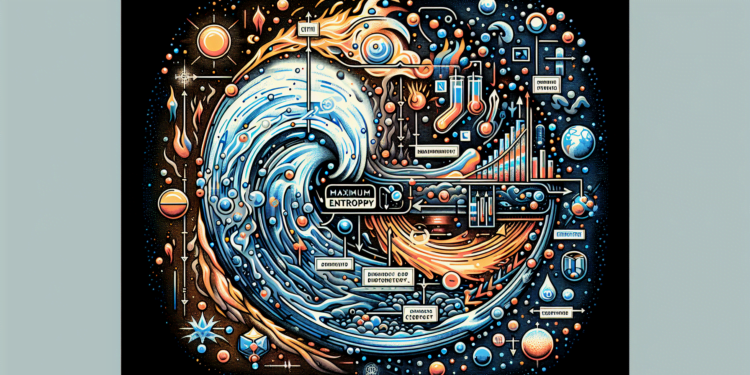The concept of entropy, inherited from thermodynamics and information theory, has found its place within the realm of machine learning. Just as entropy measures uncertainty in thermodynamic systems and in information theory, in machine learning it is the tool that guides the selection of optimal probabilistic models in broad and complex hypothesis spaces.
The principle of maximum entropy is posited as follows: when faced with partial knowledge, one should select the probability distribution that maximizes entropy (and thus, “uncertainty”) without contradicting existing knowledge. In supervised or unsupervised learning contexts, this maximization ensures that no arbitrary assumptions are introduced beyond those inherent to the existing data.
Generative Models and Maximum Entropy
Generative models such as Generative Adversarial Networks (GANs) and Boltzmann Machines, both beneficiaries of maximum entropy, continue to push the boundaries in the synthesis of images and text sequences that come close to being indistinguishable from real examples. Maximum entropy also supports optimizations in natural language recognition models, where algorithms like the Transformers adapt attention mechanisms influenced by maximum entropy probability distributions, allowing significant improvements in language understanding and generation.
Cross-Entropy Regularization and its Impact on Deep Neural Networks
Cross-entropy, stemming from information theory, has become a cornerstone for optimization techniques in neural classifiers. Minimizing the difference between estimated and actual probability distributions facilitates complex model convergence towards generalization through gradient descent, becoming an essential weapon against overfitting.
Reinforcement Learning and Maximum Entropy Optimization
Reinforcement learning has adopted maximum entropy as a core strategy for exploration-optimization of policy decision spaces. The Soft Actor-Critic approach bases its robustness on the inclusion of the entropy term in its objective function, catapulting AI’s ability to learn complex behaviors in highly variable and stochastic environments, from physical simulation to game strategy.
Emerging Applications and Recent Advances in Convex Optimization Related to Maximum Entropy
In convex optimization, advanced algorithms use entropy as a regularizer in linear and quadratic programming problems to evade local optima and improve scalability. Recent advances in parallel computing and stochastic degradation provide access to real-time solutions for problems that previously required offline scrutiny, significantly expanding the domains of effective application.
Case Studies: Maximum Entropy in Real-World Situations
Specific case studies anchor these concepts to tangible realities. The company OpenAI, with its GPT-3 model, employs maximum entropy probability distributions to generate linguistically coherent and varied responses, challenging previous conceptions of algorithmic creativity. In robotics, maximum entropy unfolds in the development of trajectory planning algorithms, allowing automatons to perform tasks in unpredictable scenarios with almost organic grace.
Projection to Future Research and Potential Developments
Looking towards the horizon, it seems paramount to explore intersections between maximum entropy and emerging techniques such as federated learning, computational neuroscience, and quantum cryptography. The potential to enhance the privacy and security of decentralized models, better understand biological cognition through patterns of neuronal activation, and safeguard data integrity in quantum environments, undoubtedly proposes fertile fields for innovation.
As artificial intelligence permeates every corner of daily life and business, understanding and applying the principle of maximum entropy stands not only as a technical imperative but as a philosophical pillar in our quest for systems that reflect and enhance the complexity inherent in human nature and the world we inhabit.






















